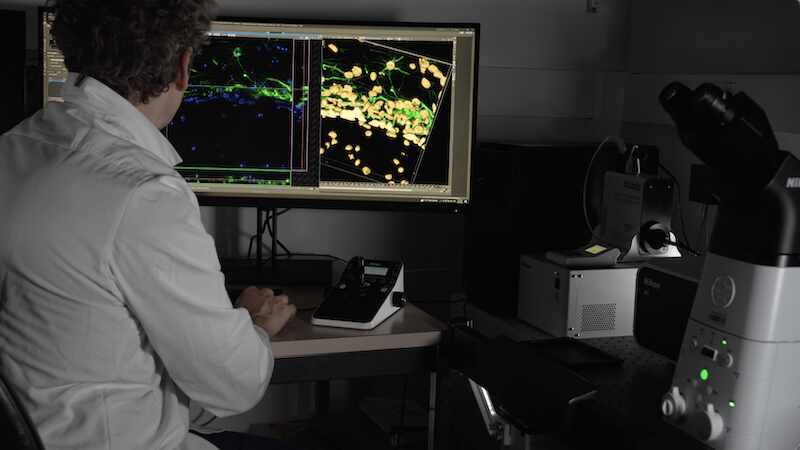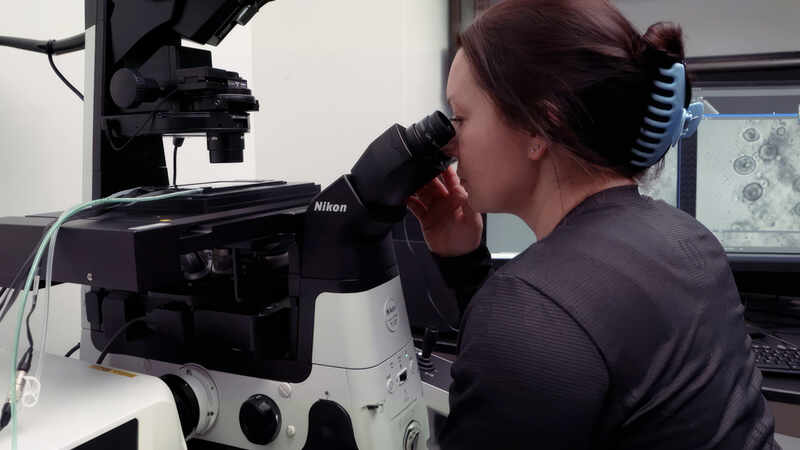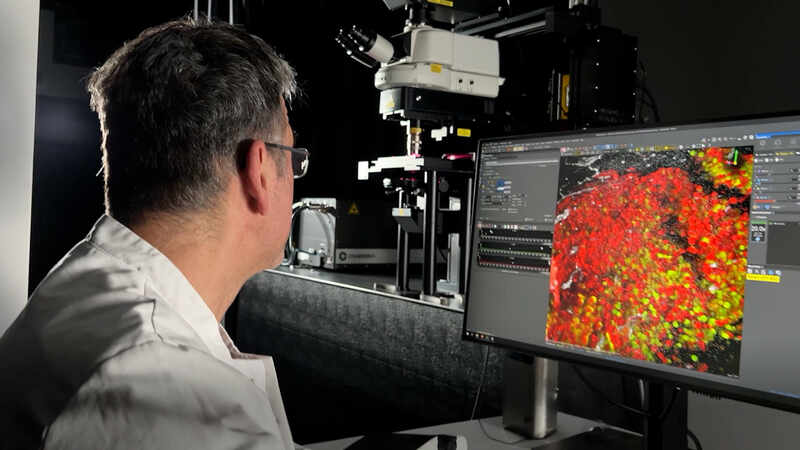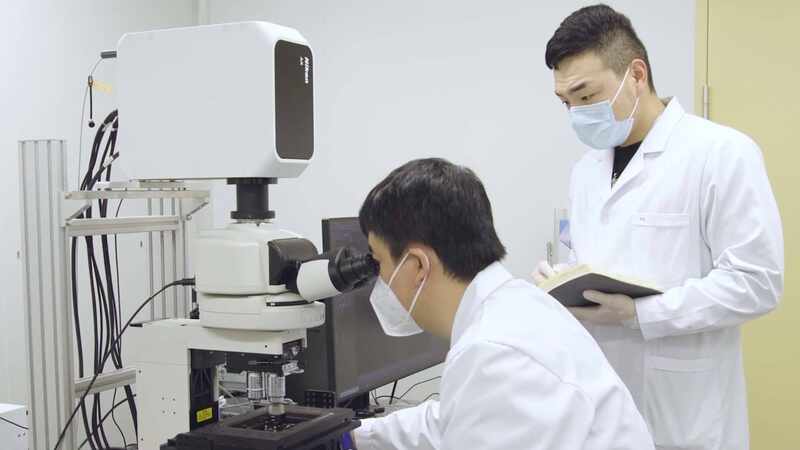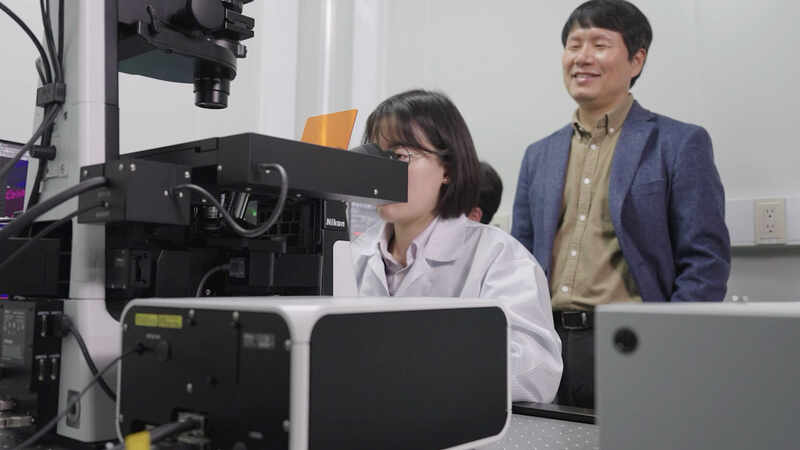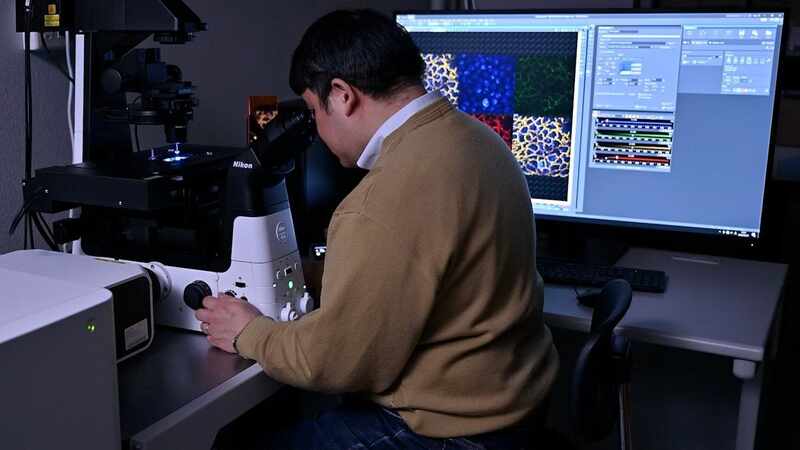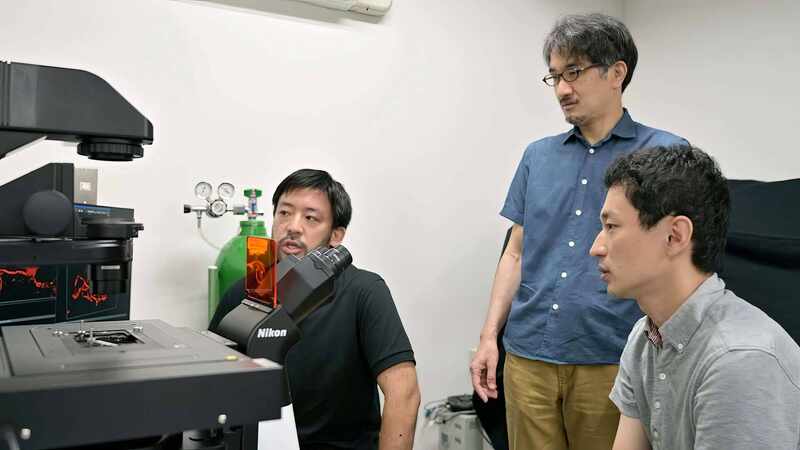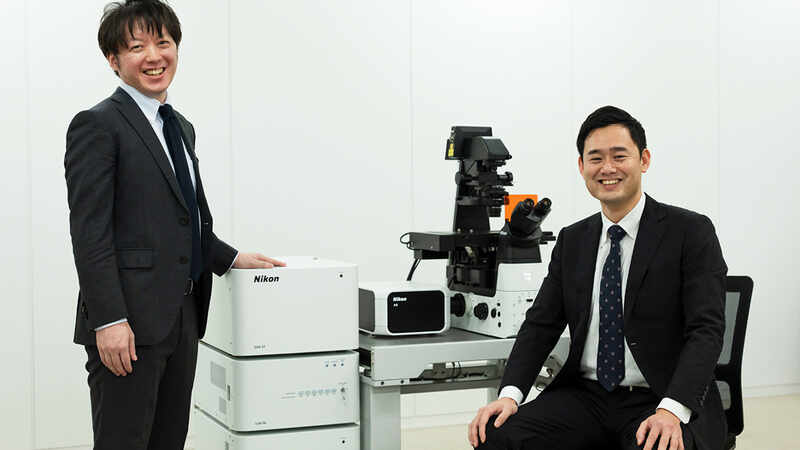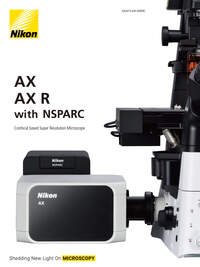- en Change Region
- Global Site
Nikon Instruments Inc. | Americas
Select Your Region and Language
Products and Promotions may differ based on your selected Region.
Americas
Europe & Africa
- Home
- Products
- Confocal and Multiphoton Microscopes
- AX / AX R with NSPARC
Glial cell surrounded by axons in a rat neuronal culture labeled for microtubules and actin
Dr. Christophe Leterrier, NeuroCyto, INP, Marseille, France
Interviews
Note: The institutions and job titles listed with each researcher reflect their affiliation at the time of the interview.


